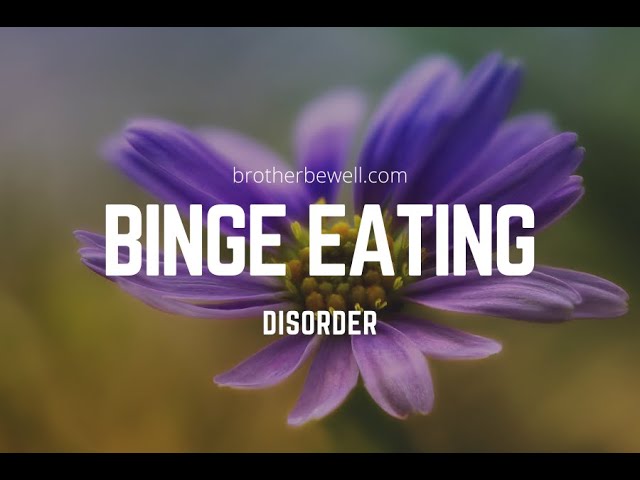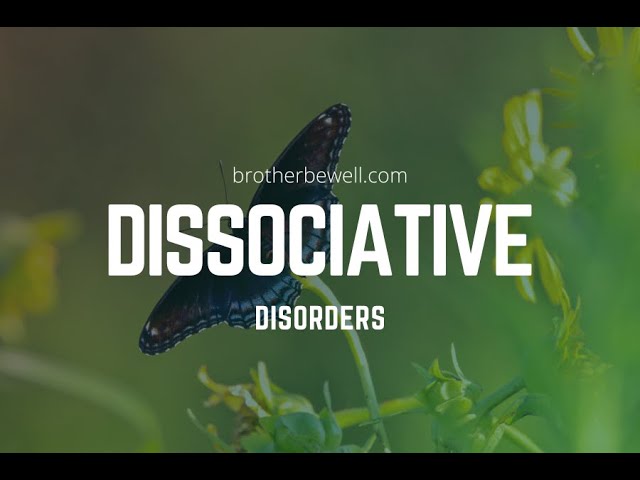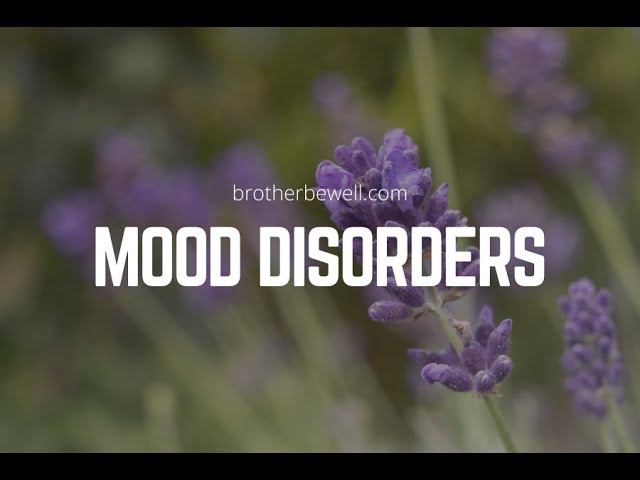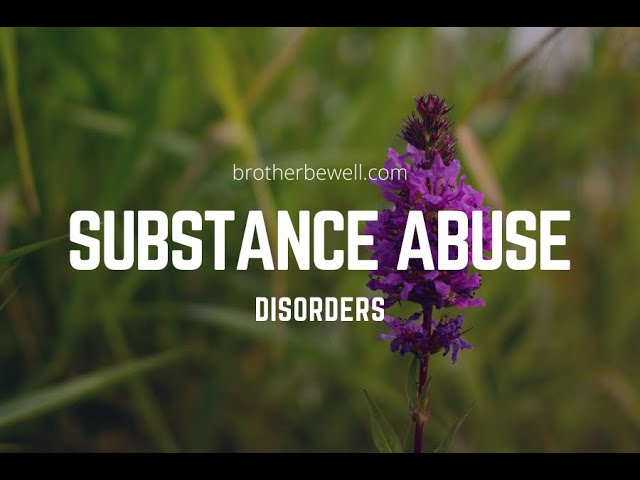Mental health conditions
and their features
Mental illness is common. 1 in 5 individuals in the United States identifies as having a mental health condition, not to mention the untold millions who have yet to be diagnosed. Learn as much as you can. It could save your life.
Go on a silent retreat to recharge your inner self.
EDUCATION | AWARENESS
COMMON MENTAL HEALTH CONDITIONS VIDEOS
An Adjustment Disorder is an emotional or behavioral reaction to a stressful event or change in a person’s life. The reaction is considered an unhealthy or excessive response to the event or change within three months of it happening. Stressful events or changes in the life of a child or adolescent may be a family move, the parents’ divorce or separation, the loss of a pet, or the birth of a sibling. A sudden illness or restriction in a child’s life due to chronic illness may also result in an adjustment response.
People with Agoraphobia often have symptoms of a panic attack, such as a rapid heartbeat and nausea, when they find themselves in a stressful situation. They may also experience these symptoms before they even enter the situation they dread. In some cases, the condition can be so severe that people avoid doing daily activities, such as going to the bank or grocery store, and stay inside their homes most of the day. The National Institute of Mental Health (NIMH) estimates that 0.8 percent of American adults have agoraphobia. About 40 percent of cases are considered severe.
Alzheimer’s Disease is a brain disorder that slowly destroys memory and thinking skills, and eventually, the ability to carry out the simplest tasks. In most people with Alzheimer’s Disease, symptoms first appear in their mid-60s. Estimates vary, but experts suggest that more than 6 million Americans, most of them age 65 or older, may have dementia caused by Alzheimer’s. Alzheimer’s Disease is currently ranked as the sixth leading cause of death in the United States. The duration of illness, from onset of symptoms to death, averages 8 to 10 years.
Anorexia Nervosa often involves emotional challenges, an unrealistic body image, and an exaggerated fear of gaining weight. Anorexia Nervosa often appears during a person’s teenage years or early adulthood, but it can sometimes begin in the preteen years or later in life. People often think of Anorexia Nervosa in connection with females, but it can affect people of any sex or gender. Statistics show that males represent about 25% of people with anorexia and that the effects are more likely to be life threatening among males than females.
Anxiety Disorders include panic disorder, obsessive-compulsive disorder, post-traumatic stress disorder, generalized anxiety disorder, and phobias (social phobia, agoraphobia, and specific phobia). Approximately 33.1 percent of adults in the U.S. have an anxiety disorder. Anxiety disorders frequently co-occur with depressive disorders, eating disorders, or substance abuse. Approximately twice as many women as men suffer from panic disorder, post-traumatic stress disorder, generalized anxiety disorder, agoraphobia, and specific phobia, though about equal numbers of women and men have obsessive-compulsive disorder and social phobia.
Attention Deficit Hyperactivity Disorder (ADHD) is one of the most common mental health disorders in children and adolescents. It affects an estimated lifetime prevalence of 9% of 13 to 18 year olds. About 2-3 times more boys than girls are affected. ADHD usually becomes evident in preschool or early elementary years. The disorder frequently persists into adolescence and occasionally into adulthood. Inattention and hyperactivity/ impulsivity are the key behaviors of ADHD. Some people with ADHD only have problems with one of the behaviors, while others have both inattention and hyperactivity-impulsivity.
Binge Eating Disorder (BED) is a severe, life-threatening, and treatable eating disorder characterized by recurrent episodes of eating large quantities of food (often very quickly and to the point of discomfort). It can give a feeling of loss of control during the binge. People with Binge Eating Disorder may experience shame, distress, or guilt afterwards, and may regularly use unhealthy compensatory measures (i.e., purging) to counter the binge eating. It is the most common eating disorder in the United States.
Bipolar Disorder (formerly called manic-depressive illness or manic depression) is a mental disorder that causes unusual shifts in mood, energy, activity levels, concentration, and the ability to carry out day-to-day tasks. People with Bipolar Disorder experience periods of unusually intense emotion, changes in sleep patterns and activity levels, and uncharacteristic behaviors, often without recognizing their harmful or undesirable effects. These distinct periods are called “mood episodes”, which are very different from the moods and behaviors that are typical for the person.
Bulimia (or Bulimia Nervosa) is a serious mental illness. It can affect anyone of any age, gender, ethnicity, or background. People with Bulimia are caught in a cycle of eating large quantities of food (called bingeing), and then trying to compensate for that overeating by vomiting, taking laxatives or diuretics, fasting, or exercising excessively (called purging). Treatment at the earliest possible opportunity gives the best chance for a fast and sustained recovery from bulimia.
Depressive Disorders encompass major depressive disorder, dysthymic disorder, and bipolar disorder. Bipolar disorder is included because people with this illness have depressive episodes as well as manic episodes. In 2015, approximately 16.1 million American adults, or about 6.7 percent of the U.S. population age 18 and older in a given year, had a depressive episode in the past year. Nearly twice as many women (8.5 percent) as men (4.7 percent) are affected by a depressive disorder each year. Depressive disorders may be appearing earlier in life in people born in recent decades compared to the past. Depressive disorders often co-occur with anxiety disorders and substance abuse.
People with Dissociative Disorders suffer severe disturbances or changes in memory, consciousness, identity, and general awareness of themselves and their surroundings. These disorders usually are associated with overwhelming stress, which may be the result of traumatic events, accidents, or disasters that may be experienced or witnessed by the individual. Dissociative Identity Disorder, formerly called multiple personality disorder or “split personality”, and depersonalization disorder, are examples of dissociative disorders.
Factitious Disorder is a serious mental health disorder in which a person appears sick or produces physical or mental illness. People with factitious disorder deliberately produce symptoms of an illness for the purpose of receiving care and attention in a medical setting. The symptoms aren’t intended to get them practical benefits — the gain is believed to be mainly psychological. Factitious disorder is considered a mental illness. It’s associated with severe emotional difficulties and patients’ likelihood of harming themselves by continuing to produce more symptoms, resulting in getting themselves unnecessary procedures and surgeries.
Generalized Anxiety Disorder is excessive worry around a number of everyday problems, such as experiencing intense anxiety over a minor concern. Some people experience physical symptoms, too, including muscle tension and sleep problems. It is also known as Chronic Anxiety Neurosis. Sometimes people with this condition just worry, but they are unable to say what they are worried about. They report feelings that something bad may happen or may report that they just can’t calm themselves. This excessive, unrealistic worry can be frightening and can interfere with relationships and daily activities.
Impulse Control Disorders (ICDs) are common psychiatric conditions in which affected individuals typically report significant impairment in social and occupational functioning, and may incur legal and financial difficulties, as well. Despite evidence of ICDs being fairly common, they remain poorly understood by the general public, clinicians, and persons with the disorders. Formal ICDs include pathological gambling (PG), kleptomania, trichotillomania (TTM), intermittent explosive disorder (IED), and pyromania. These disorders are characterized by difficulties in resisting urges to engage in behaviors that are excessive and/or ultimately harmful to oneself or others.
When someone experiences persistent and intense feelings of sadness for extended periods of time, they may have a mood disorder such as Major Depressive Disorder (MDD). Depression in men is significantly underreported. Men who suffer from clinical depression are less likely to seek help or even talk about their experience. Signs of depression in men may include irritability, anger, or drug and alcohol abuse (substance abuse can also be a cause of depression rather than the result of it). Suppressing negative feelings can result in violent behavior directed both inwardly and outwardly. It can also result in an increase in illness, suicide, and homicide.
Mood Disorders, also called affective disorders, involve persistent feelings of sadness or periods of feeling overly happy, or fluctuations from extreme happiness to extreme sadness. The most common mood disorders are depression, bipolar disorder, and cyclothymic disorder. It is normal for someone’s mood to change depending on the situation. However, to be diagnosed with a mood disorder, symptoms must be present for several weeks or longer. Mood disorders can cause changes in behavior and can affect one’s ability to deal with routine activities, such as work or school.
Neurocognitive Disorders are a group of conditions that frequently lead to impaired mental function. Organic Brain Syndrome used to be the term to describe these conditions, but Neurocognitive Disorders is now the more commonly used term. Neurocognitive Disorders most commonly occur in older adults, but they can affect younger people as well. Reduced mental function may include problems with memory, changes in behavior, difficulty understanding language, and trouble performing daily activities. Neurodegenerative diseases cause the brain and nerves to deteriorate over time, resulting in a gradual loss of neurological function.
Neurodevelopmental Disorders are a group of conditions with onset in the developmental period. The disorders typically manifest early in development, often before a child enters grade school, and are characterized by developmental deficits that produce impairments of personal, social, academic, or occupational functioning. The range of developmental deficits varies from very specific limitations of learning or control of executive functions to global impairments of social skills or intelligence.
Obsessive Compulsive Disorder (OCD) is a disorder in which people have recurring, unwanted thoughts, ideas, or sensations (obsessions) that make them feel driven to do something repetitively (compulsions). The repetitive behaviors, such as hand washing, checking on things, or cleaning, can significantly interfere with a person’s daily activities and social interactions. For people with OCD, thoughts are persistent and behaviors are rigid. Not performing the behaviors commonly causes great distress. Even if they know their obsessions are not realistic, people with OCD have difficulty disengaging from the obsessive thoughts or stopping the compulsive actions.
Panic Disorder occurs when one experiences recurring unexpected panic attacks. The DSM-5 defines panic attacks as abrupt surges of intense fear or discomfort that peak within minutes. People with this disorder live in fear of having a panic attack. You may be having a panic attack when you feel sudden, overwhelming terror that has no obvious cause. You may experience physical symptoms, such as a racing heart, breathing difficulties, and sweating. Most people experience a panic attack once or twice in their lives. The American Psychological Association reports that 1 out of every 75 people might experience panic disorder.
People with Personality Disorders have extreme and inflexible personality traits that are distressing to the person and/or cause problems in work, school, or social relationships. In addition, the person’s patterns of thinking and behavior significantly differ from the expectations of society and are so rigid that they interfere with the person’s normal functioning. Examples include antisocial personality disorder, obsessive-compulsive personality disorder, and paranoid personality disorder.
A Phobia is an excessive and irrational fear reaction. A person may experience a deep sense of dread or panic when encountering the source of fear. The fear can be of a certain place, situation, or object. Unlike general anxiety disorders, a phobia is usually connected to something specific. The impact of a phobia can range from annoying to severely disabling. People with phobias often realize their fear is irrational, but they’re unable to do anything about it. Such fears can interfere with work, school, and personal relationships. An estimated 19 million Americans have a phobia that causes difficulty in some area of their lives.
Post-Traumatic Stress Disorder (PTSD) is a psychiatric disorder that may occur in people who have experienced or witnessed a traumatic event such as a natural disaster, a serious accident, a terrorist act, war/combat, or rape, or who have been threatened with death, sexual violence, or serious injury. PTSD can occur in all people, of any ethnicity, nationality, or culture, and at any age. PTSD affects approximately 3.5 percent of U.S. adults every year, and an estimated one in 11 people will be diagnosed with PTSD in their lifetime. People with PTSD have intense, disturbing thoughts and feelings related to their experience that last long after the traumatic event has ended.
Psychotic Disorders are severe mental disorders that cause abnormal thinking and perceptions. People with psychosis lose touch with reality. Two of the main symptoms are delusions and hallucinations. Delusions are false beliefs, such as thinking that someone is plotting against you or that the TV is sending secret messages. Hallucinations are false perceptions, such as hearing, seeing, or feeling something that is not there. Schizophrenia is one type of psychotic disorder. People with Bipolar Disorder may also have psychotic symptoms. Other problems that can cause psychosis include alcohol and some drugs, brain tumors, brain infections, and stroke.
Schizoaffective Disorder is a mental health disorder that is marked by a combination of schizophrenia symptoms such as hallucinations or delusions, and mood disorder symptoms, such as depression or mania. The two types of Schizoaffective Disorder — both of which include some symptoms of schizophrenia — are: Bipolar type, which includes episodes of mania and sometimes major depression, and Depressive type, which includes only major depressive episodes. Untreated Schizoaffective Disorder may lead to problems functioning at work, at school, and in social situations, causing loneliness and trouble holding down a job or attending school.
Schizophrenia is a chronic brain disorder. When Schizophrenia is active, symptoms can include delusions, hallucinations, trouble with thinking and concentration, and lack of motivation. Schizophrenia does not mean split personality or multiple-personality disorder. Approximately 1.1 % of the population age 18 and older have Schizophrenia. It affects men and women with equal frequency. Schizophrenia often first appears earlier in men, usually in their late teens or early 20s, than in women, who are generally affected in their 20s or early 30s.
Self-Harm / Self-Injury refers to people deliberately hurting their bodies. It is usually done in secret and on places of the body that may not be seen by others. The most common type of self-harm is cutting, but there are many other types of self-harm including burning or punching the body, or picking skin or sores. In general, people self-harm as a way of coping. People often talk about harming themselves to relieve, control, or express distressing feelings, thoughts, or memories. Some people harm themselves because they feel alone, while others do so to punish themselves due to feelings of guilt or shame.
Sleep Disorders are conditions that result in changes in the way a person sleeps. A sleep disorder can affect overall health, safety, and quality of life. Sleep deprivation can affect one’s ability to drive safely and increases risk of other health problems. Some of the signs and symptoms of sleep disorders include excessive daytime sleepiness, irregular breathing, or increased movement during sleep. Other signs and symptoms include an irregular sleep and wake cycle and difficulty falling asleep. Insomnia is an example, in which a person has difficulty falling asleep or staying asleep throughout the night.
Feelings of shyness or discomfort in certain situations aren’t necessarily signs of Social Anxiety Disorder, particularly in children. Comfort levels in social situations vary, depending on personality traits and life experiences. Some people are naturally reserved and others are more outgoing. In contrast to everyday nervousness, Social Anxiety Disorder includes fear, anxiety, and avoidance that interfere with relationships, daily routines, work, or school. Social Anxiety Disorder typically begins in the early to mid-teens, though it can sometimes start in younger children or in adults.
Somatic Symptom Disorder involves a person having a significant focus on physical symptoms such as pain, weakness, or shortness of breath, that results in major distress and/or problems functioning. The individual has excessive thoughts, feelings, and behaviors relating to the physical symptoms. The physical symptoms may or may not be associated with a diagnosed medical condition, but the person is experiencing symptoms and believes they are sick. A person is not diagnosed with Somatic Symptom Disorder solely because a medical cause can’t be identified for a physical symptom. The emphasis is on the extent to which the feelings and behaviors are excessive or out of proportion.
Drug addiction, also called Substance Abuse Disorder, is a disease that affects a person’s brain and behavior and leads to an inability to control the use of a legal or illegal drug or medication. Substances such as alcohol, marijuana, and nicotine are also considered drugs. Drug addiction can start with experimental use of a recreational drug in social situations, and for some people, the drug use becomes more frequent. Some drugs, such as opioid painkillers, have a higher risk and cause addiction more quickly than others. Attempts to stop drug use may cause intense cravings and make one feel physically ill (withdrawal symptoms).
In 2020, 44,834 people died by suicide in the U.S. More than 90 percent of people who die by suicide have a diagnosable mental health disorder, commonly a depressive disorder or a substance use disorder. The highest suicide rates in the U.S. are found in men over age 75. The suicide rate in young people increased dramatically over the last few decades. In 2020, suicide was the 2nd leading cause of death among 15 to 24 year olds. Four times as many men than women die by suicide. However, women attempt suicide 2-3 times as often as men.
In 2020, 44,834 people died by suicide in the U.S. More than 90 percent of people who die by suicide have a diagnosable mental health disorder, commonly a depressive disorder or a substance use disorder. The highest suicide rates in the U.S. are found in men over age 75. The suicide rate in young people increased dramatically over the last few decades. In 2020, suicide was the 2nd leading cause of death among 15 to 24 year olds. Four times as many men than women die by suicide. However, women attempt suicide 2-3 times as often as men.































































